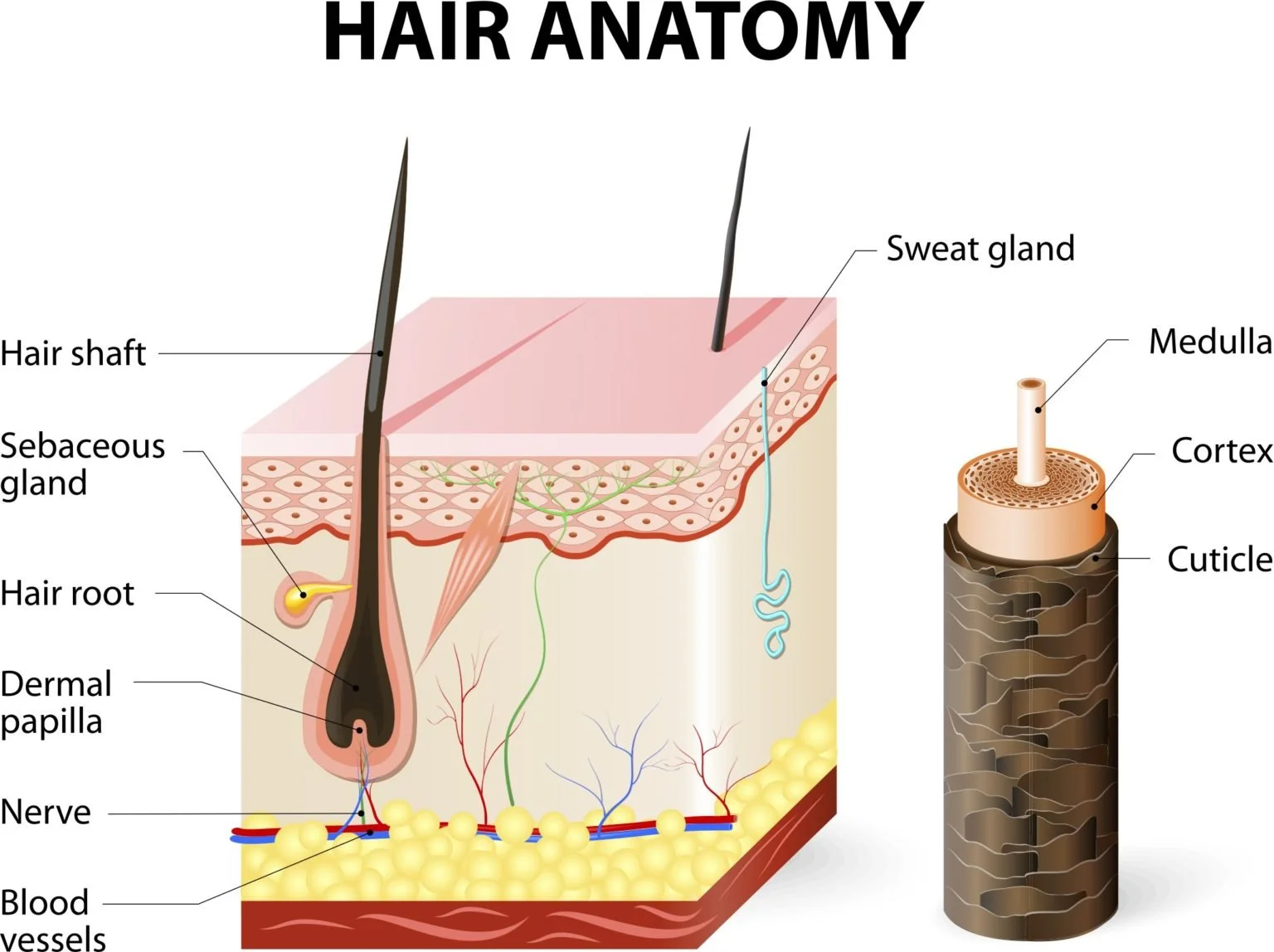Healthy Hair: Foundations
A top question in every wellness industry for women always is what is the secret to healthy hair? The truth is, there are tons of medical reasons you could have brittle or weak hair. There are numerous factors that contribute to hair growth or lack of such as genetics, nutrition, hormonal imbalances, thyroid function, stress, medications, and more. Prior to pursuing supplementation to enhance hair growth, I recommend you see your healthcare provider to get general labs and vitamin levels tested. The healthcare provider you see should also do an in-depth dive into your medications; some medications like birth control can affect hair growth. I want to start this series with the foundations of hair.
What is hair actually made of?
Hair is primarily made of a protein called keratin —a fibrous and helical protein. Amino acids are the building blocks of all proteins in our body. Our hair is composed of many different amino acids, but keratin is primarily made up of the amino acid cysteine. The entire skin, besides palms and soles, contains hair. There are two types of hair follicles: terminal and vellus. Terminal follicles produce terminal hairs which are long and pigmented. Vellus are small and localized to areas that have thin superficial hair and are not pigmented. The hair follicle has an upper permanent part and a transient part that migrates through the hair cycle. The transient section includes the hair bulb —around this area is where there is the hair matrix which produces hair shafts and sheaths.
How does hair actually grow?
The hair growth cycle occurs in four phases: the growth phase (anagen phase), the transitional phase, the resting phase, and shedding. The growth phase varies depending on the area of the body—most of the hair on our body at any given time is in this phase. This is also the longest phase (about 2-7 years on your scalp!) During this phase hair follicles are pushing out hairs that will continue to grow. The next phase is the transition (catagen) phase. This is where the hair growth slows and the hair separates from the hair follicle. This part of the cycle lasts about 2-4 weeks. The next phase is the resting (telogen) phase —this is where hair tends to fall out. This phase lasts about 3-4 months. Typically 25-100 telogen hairs can be shed in a day. This is when you have hair fall out and you see the dry, white, bulb-like material at the root. The final stage is called the shedding (exogen) phase which is basically an extension of the telogen. This is the actual shedding of the hair.
The Basics First
I want to serve as a guide for you to be educated when you talk to your healthcare provider about causes for potential hair loss or stunted growth. Weak, brittle hair or hair loss can be distressing, especially to us women. The first step, medically speaking is to do a deep dive into family history, drug use (prescribed and recreational), chronic disorders, and severity/duration of hair loss/concern. From there, your clinician may decide if the hair density is normal or lower than average and then evaluate if the rate of shedding is normal or increased. There are numerous drugs that have hair loss as a side effect—be sure to also discuss any supplements or over-the-counter drugs you use. Prior to any appointments understand your family history—does hair loss run in your family, and any thyroid or autoimmune issues? These are all contributing factors to hair growth. Hormones also play an immense role in hair health—have you recently started or stopped hormonal birth control or menopausal supplementation? Finally, nutrition also is a big player in proper hair health. In Western society, we usually obtain most of our required macro and micronutrients without supplementation, but vitamin and mineral testing is always helpful.
Sources:
Goldman L, Schafer AI, Cecil RL. Goldman-Cecil Medicine. Philadelphia, PA: Elsevier/Saunders; 2016.
